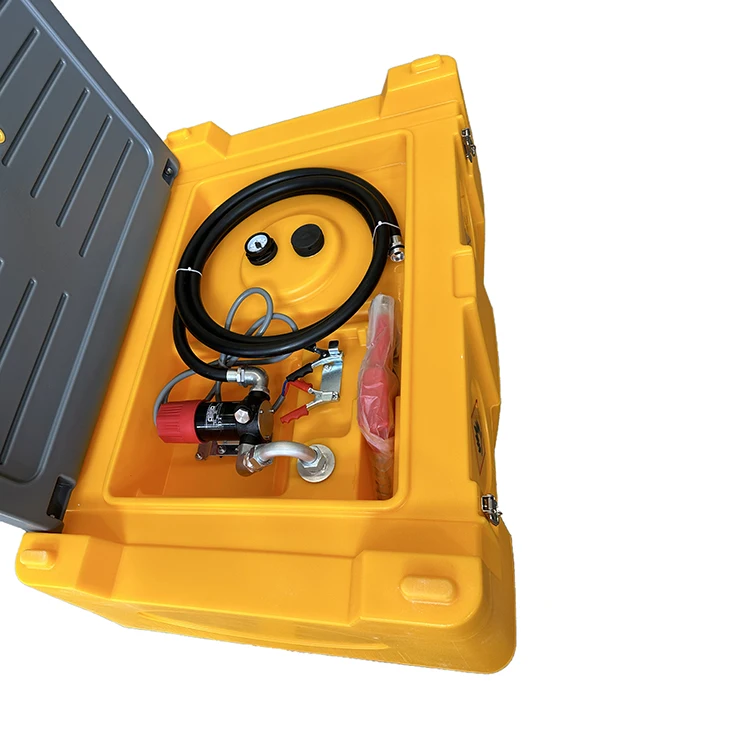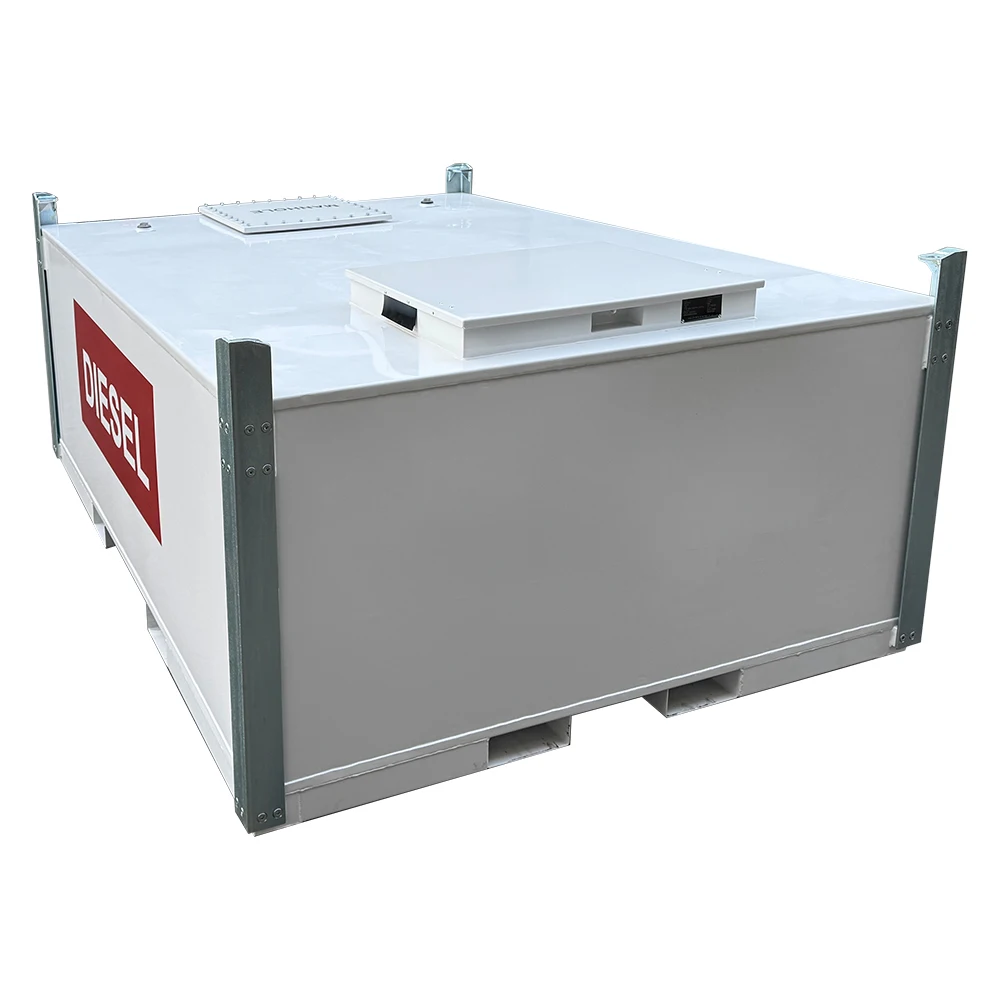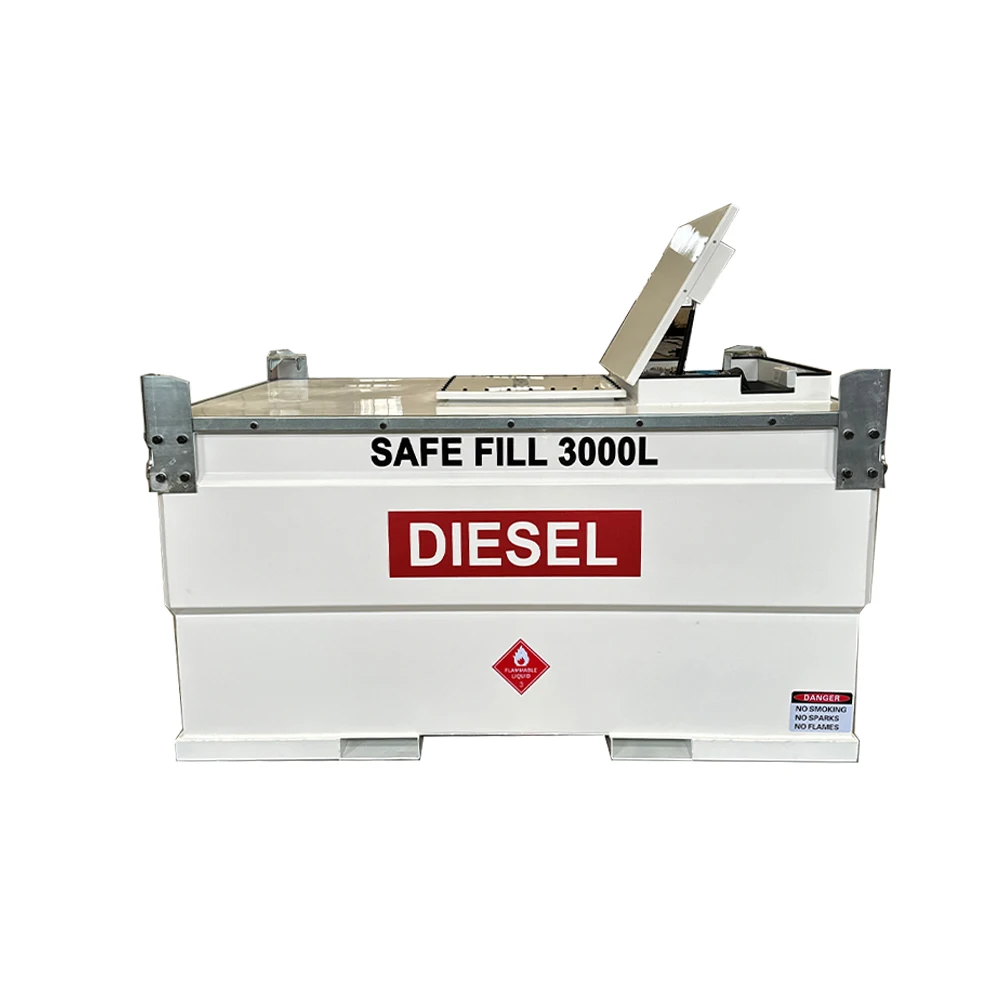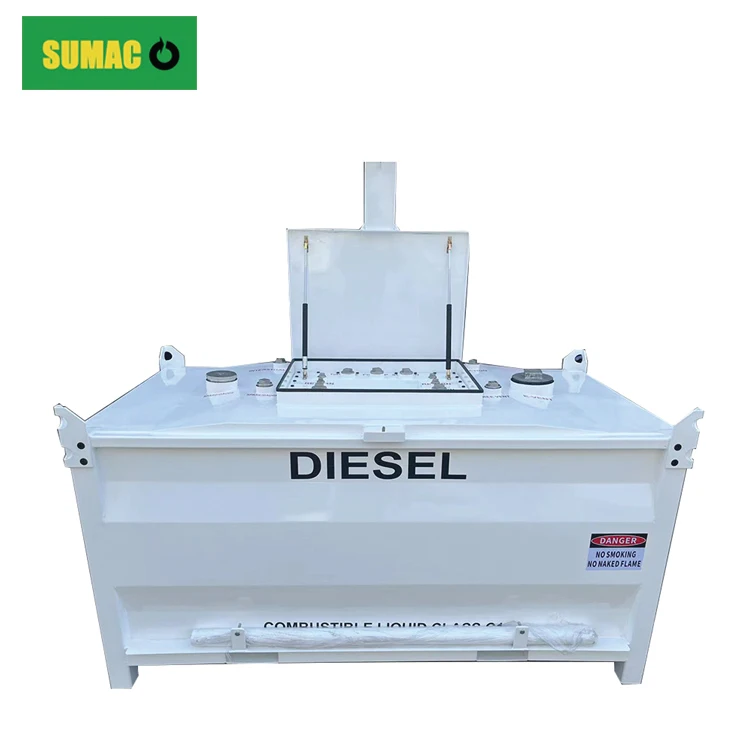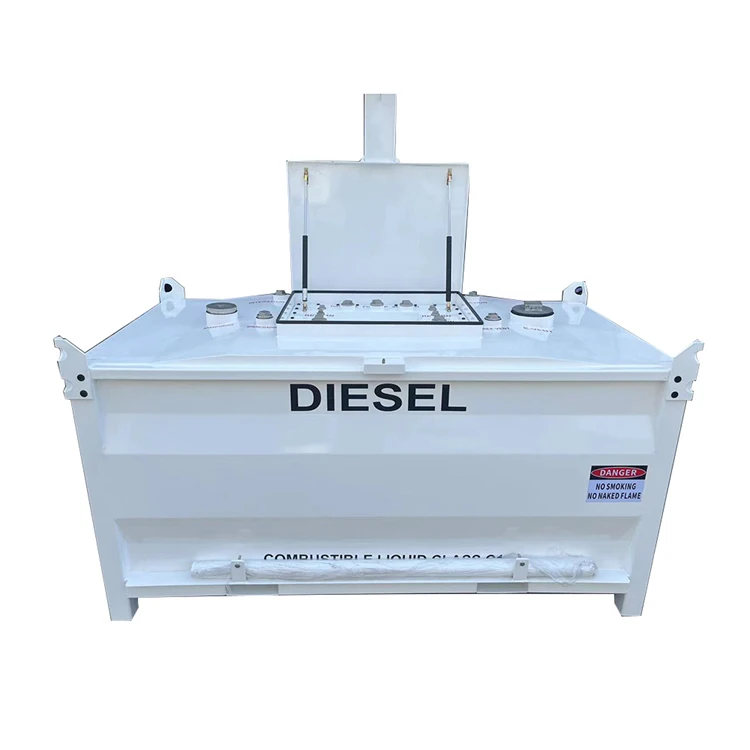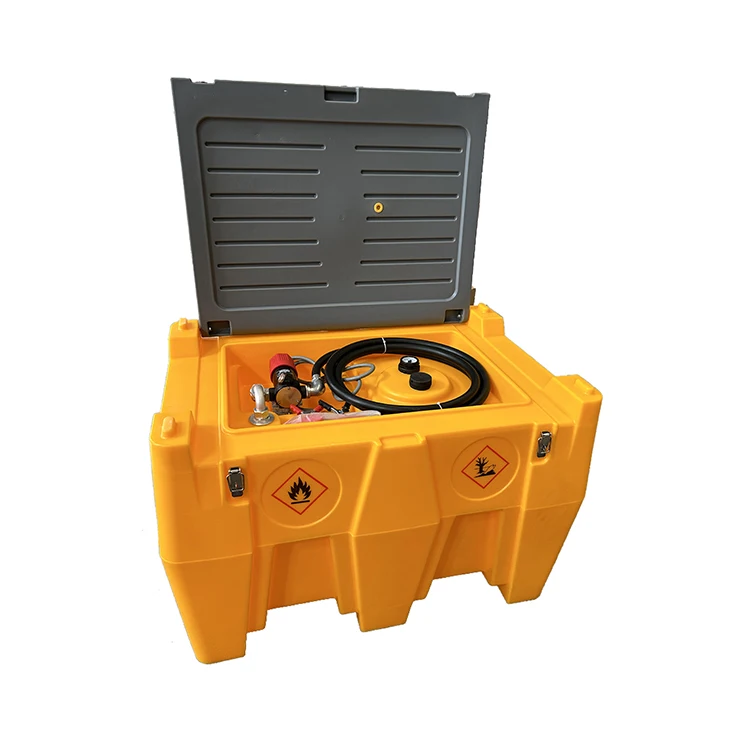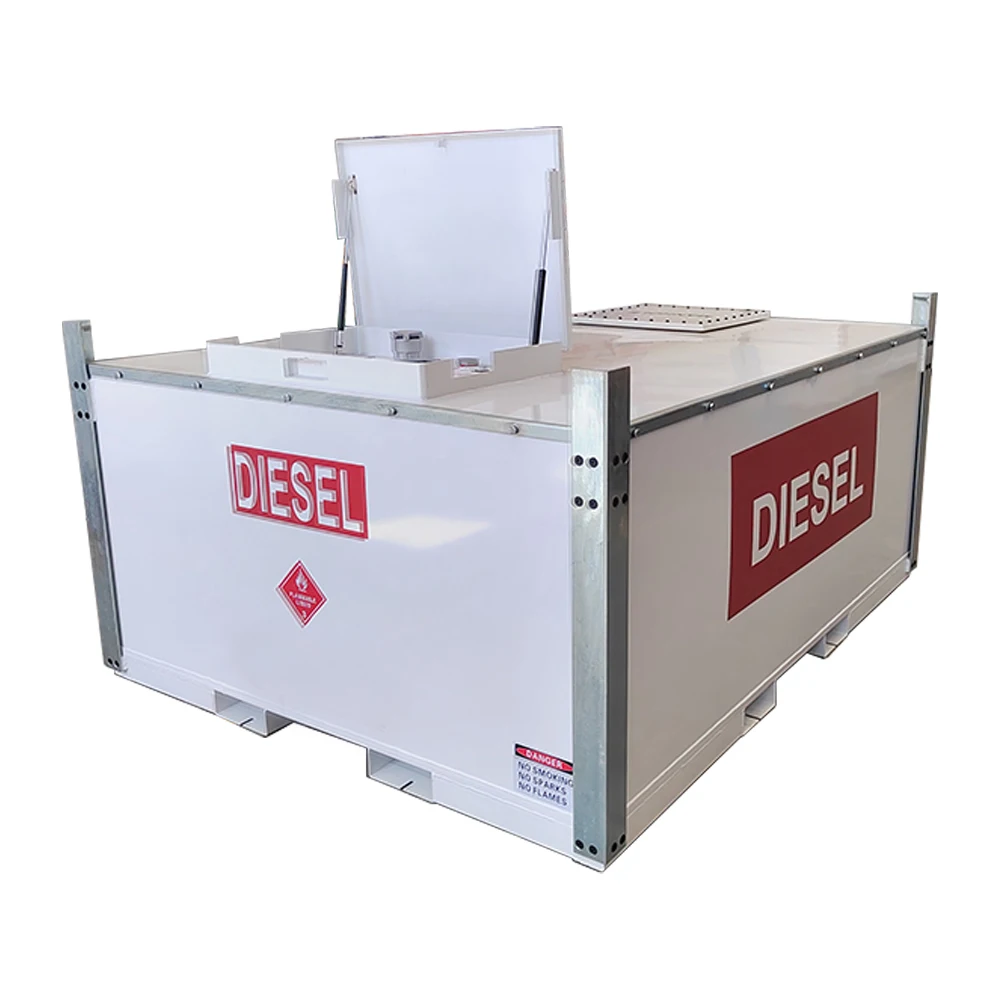Diesel Fuel Cube Tank With Pump
A diesel fuel cube tank with a pump is a useful equipment combination in many settings.
1. Tank Structure
A cube - shaped diesel fuel tank is designed to store diesel fuel. The cube shape provides stability and efficient use of space. These tanks are usually made of durable materials such as steel or high - density polyethylene. Steel tanks are strong and can withstand harsh conditions, but they may be prone to rust if not properly maintained. High - density polyethylene tanks are lightweight, corrosion - resistant, and have good chemical resistance.
The capacity of cube tanks can vary widely. Smaller cube tanks might have a capacity of a few hundred liters, while larger ones can hold thousands of liters. The size is chosen based on the intended use, such as for a small backup generator (a few hundred liters might suffice) or for fuel storage at a construction site or a remote industrial operation (where larger capacities are needed).
2. Pump System
The pump attached to the tank serves the purpose of transferring the diesel fuel from the tank to the destination, such as a vehicle's fuel tank or an engine's fuel inlet. There are different types of pumps. Electric pumps are common and are powered by electricity. They offer a consistent flow rate and can be controlled more precisely. Manual pumps, on the other hand, rely on human effort to operate. They are useful in situations where electricity is not available or as a backup option.
The flow rate of the pump is an important parameter. It is measured in liters per minute (LPM). A typical small - scale pump for a portable cube tank might have a flow rate of 10 - 20 LPM, while larger industrial pumps can have flow rates in the hundreds of LPM. The pump's flow rate should be matched to the requirements of the equipment being fueled. For example, a large truck might need a pump with a relatively high flow rate to fill its fuel tank quickly.
3. Applications
In the transportation industry, these cube tanks with pumps are used to refuel vehicles such as trucks, buses, and agricultural machinery. They provide a convenient way to carry an additional fuel supply during long - haul trips or in areas where fuel stations are scarce.
For backup power generation, a diesel fuel cube tank with a pump is essential to supply fuel to generators. This is crucial for maintaining power during power outages in facilities like hospitals, data centers, and emergency shelters.
In construction and mining sites, they are used to fuel heavy - duty equipment such as excavators, bulldozers, and loaders. The ability to have a mobile fuel source on - site can increase the efficiency of operations and reduce downtime caused by the need to travel to a distant fuel station.
4. Safety Considerations
Diesel fuel is a flammable liquid. The tank and pump system should be installed and used in a well - ventilated area to prevent the buildup of fuel vapors. Vapor detectors can be installed to monitor the presence of potentially explosive vapors.
Grounding the tank is essential to prevent static electricity - induced sparks. Static electricity can build up during the fuel transfer process and can ignite the fuel vapors.
Regular maintenance of the tank and pump is necessary to ensure that there are no leaks. Leaks can not only lead to fuel waste but also pose a significant fire and environmental hazard.
5. Installation and Regulations
Installation of a diesel fuel cube tank with a pump requires compliance with local safety and environmental regulations. In many regions, permits are required for the installation of fuel storage tanks. The tank should be placed on a stable and level surface, and the pump should be installed and calibrated according to the manufacturer's instructions.
There are also regulations regarding spill containment. A secondary containment system, such as a bund wall or a spill pallet, should be in place to prevent fuel from spreading in case of a leak or spill.
https://www.sumachine.com/
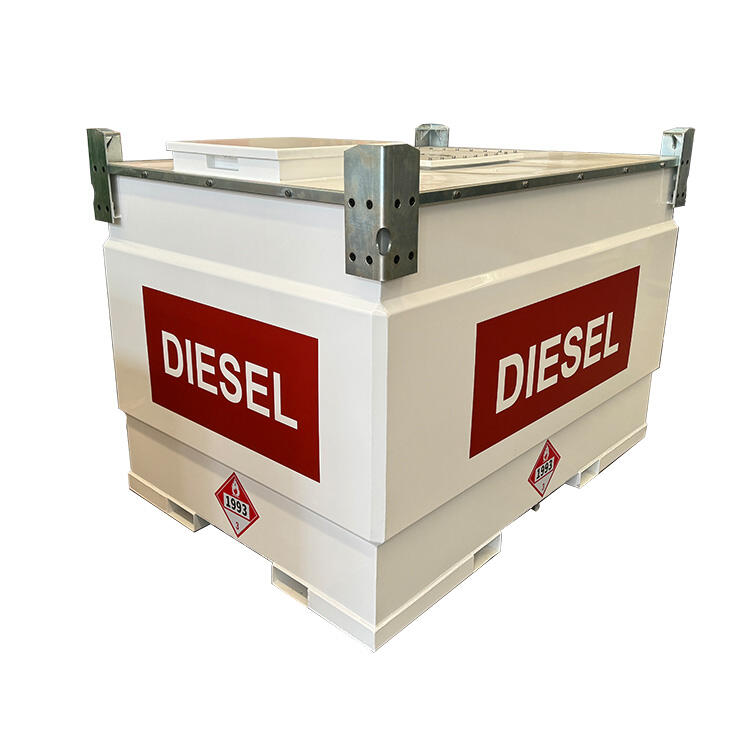
Recommended Products
Hot News
-
Double wall portable diesel gasoline cube tank with pump sale for Mauritius
2024-11-11
-
Double Walled Portable Fuel TransferCube Tank Ship To Spain
2024-11-07
-
Shipping of portable aviation fuel tank with pump
2024-10-12
-
Carbon steel diesel fuel cube tank ship to USA
2024-11-14
-
Carbon steel cube tank with pump
2024-11-13
-
Fuel Transfer Tank Cube Stationary Double Walled Diesel Storage Tank Sale For Spain
2024-11-06
-
251 US Gallon 552 Gallon Fuel Cube Transfer Tank Sale For USA
2024-11-05
-
251-2000 Gallon Fuel Cube Transfer Tank Sale For Grenada
2024-11-01
-
552 Gallon portable fuel dispenser with tank sale for USA
2024-10-30
-
Mobile fuel tank with pump sale for Spain
2024-10-22
 EN
EN
 AR
AR
 BG
BG
 HR
HR
 CS
CS
 DA
DA
 NL
NL
 FI
FI
 FR
FR
 DE
DE
 EL
EL
 IT
IT
 JA
JA
 KO
KO
 NO
NO
 PL
PL
 PT
PT
 RO
RO
 RU
RU
 ES
ES
 SV
SV
 TL
TL
 ID
ID
 LT
LT
 SR
SR
 SK
SK
 SL
SL
 UK
UK
 VI
VI
 HU
HU
 TH
TH
 TR
TR
 MS
MS
 GA
GA
 IS
IS
 KA
KA
 HT
HT
 KK
KK
 UZ
UZ


